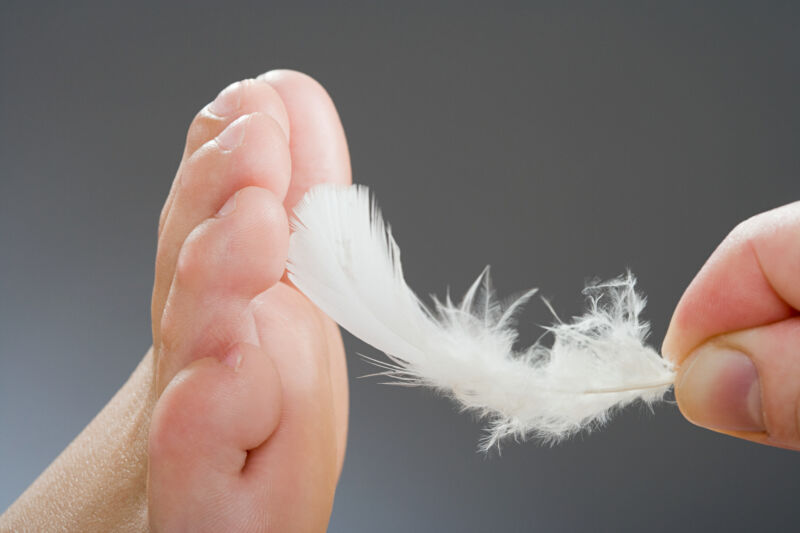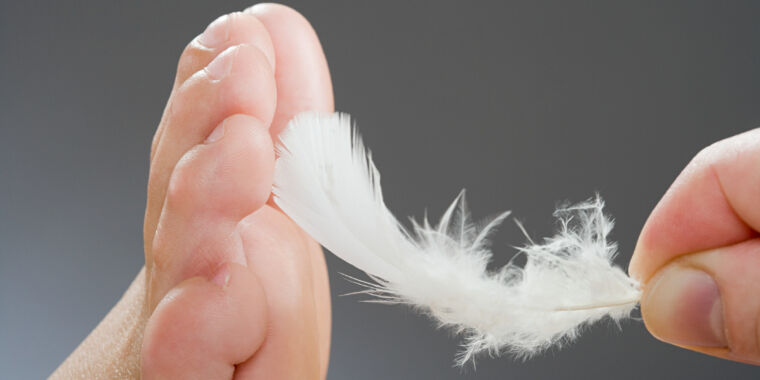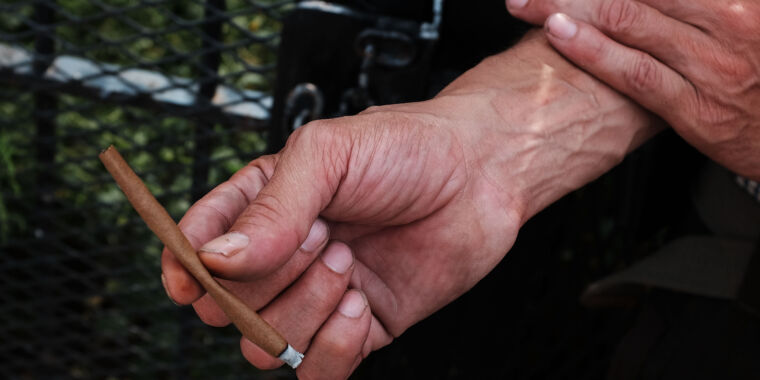
Inside a Berlin neuroscience lab one day last year, Subject 1 sat on a chair with their arms up and their bare toes pointed down. Hiding behind them, with full access to the soles of their feet, was Subject 2, waiting with fingers curled. At a moment of their choosing, Subject 2 was instructed to take the open shot: Tickle the hell out of their partner.
In order to capture the moment, a high-speed GoPro was pointed at Subject 1’s face and body. Another at their feet. A microphone hung nearby. As planned, Subject 1 couldn’t help but laugh. The fact that they couldn’t help it is what has drawn Michael Brecht, leader of the research group from Humboldt University, to the neuroscience of tickling and play. It’s funny, but it’s also deeply mysterious—and understudied. “It’s been a bit of a stepchild of scientific investigation,” Brecht says. After all, brain and behavior research typically skew toward gloom, topics like depression, pain, and fear. “But,” he says, “I think there are also more deep prejudices against play—it’s something for children.”

The prevailing wisdom holds that laughter is a social behavior among certain mammals. It’s a way of disarming others, easing social tensions, and bonding. Chimps do it. Dogs and dolphins too. Rats are the usual subjects in tickling studies. If you flip ’em over and go to town on their bellies, they’ll squeak at a pitch more than twice as high as the limit of human ears. But there are plenty of lingering mysteries about tickling, whether among rats or people. The biggest one of all: why we can’t tickle ourselves.
“If you read the ancient Greeks, Aristotle was wondering about ticklishness. Also Socrates, Galileo Galilei, and Francis Bacon,” says Konstantina Kilteni, a cognitive neuroscientist who studies touch and tickling at Sweden’s Karolinska Institutet, and who is not involved in Brecht’s work. We don’t know why touch can be ticklish, nor what happens in the brain. We don’t know why some people—or some body parts—are more ticklish than others. “These questions are very old,” she continues, “and after almost 2,000 years, we still really don’t have the answer.”
Part of the trouble is that it’s hard to collect objective measures of how humans respond to tickling and correlate them with perceived ticklishness. That’s why Brecht’s group lured 12 people into a study that—albeit with a small sample size—was designed to observe the phenomenon with non-Aristotelian toys like GoPros and mics. The footage his team collected would help them unpack what happens when people get tickled, and what changes when they tickle themselves. Writing in Philosophical Transactions of the Royal Society B in September, the team reports observations on reaction times, laughter, and breathing, and for the first time in a human study, they show that tickling oneself while being tickled suppresses ticklishness. “It’s rare. Studies typically don’t do that,” says Kilteni. “It really contributes to the state of the art.”
Tickling, says Brecht, is “a very strange kind of touch and reaction to touch.” He is fascinated by how fundamental these complex behaviors are. In a 1897 paper called “The Psychology of Tickling, Laughing, and the Comic,” the authors noted that all people generally have the same ticklish spots. Feet rank the highest. Armpits, necks, and chins follow. We instinctively tickle and play as kids, and though some of that predilection toward play fades with age, we always understand this mysterious language. Brecht believes it’s a form of social signaling in the context of play fighting: “You signal with your giggles that it’s okay to touch, when normally would be inappropriate to touch.” (Your laugh-signals can even come before the touch. Think of a kid about to get tickled by a parent: “They giggle like hell before you actually get there.”)
In the new study’s first phase, each subject had their moment in front of the GoPros and microphone. Previous studies have established that tickling is mood-dependent—anxiety and unfamiliarity suppress it like a wet blanket. Since participants would have to take turns tickling each other, Brecht’s team made sure each pair knew each other beforehand and felt comfortable—but each person was still surprised by the actual tickling attack. The tickler always hid behind their partner, while watching a videoscreen that fed them randomized sequences of body parts to touch. Neck, armpit, lateral trunk, plantar foot, crown of the head—each spot got five quick tickles.
The first observation: a person’s facial expressions and breathing changed about 300 milliseconds into a tickle. (The write-up describes the poetry caught on GoPro footage: The ticklee’s cheeks raised, the corner of their lips pulled outward, “the occurrence of which in combination signals a joyous smile.”)
Then, at about 500 milliseconds, came the vocalization—surprisingly late. (A normal vocal reaction time to being touched is about 320 milliseconds.) The team suspects that laughs take longer because they require more complicated emotional processing.
The subjects also rated how ticklish each touch was. The crown of the head is not usually ticklish, so it served as a control for what happens when you tickle someone in a not-responsive spot. Volunteers laughed audibly after about 70 percent of touches, and the more intensely they felt the tickle, the louder and higher pitched they laughed. In fact, the sound of their laughter was the measure that best correlated with their subjective ratings of how intense each tickle had felt.








